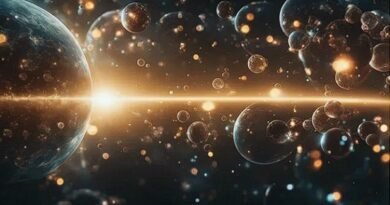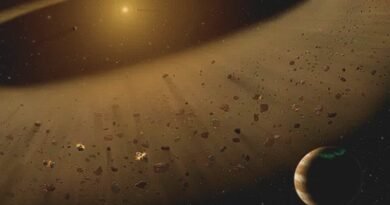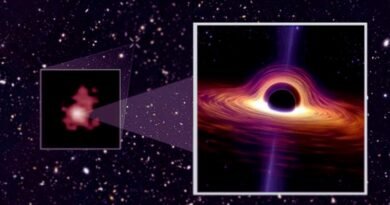NASA’s OSIRIS-REx Mission Surpasses Expectations: Collects 4.3 Ounces of Asteroid Bennu

NASA’s OSIRIS-REx Mission as it collects 120 grams of asteroid Bennu rubble, hinting at the possibility of containing life’s building blocks.
NASA’s groundbreaking OSIRIS-REx mission has exceeded expectations, gathering a remarkable 4.3 ounces (122 grams) of material from the potentially hazardous asteroid, Bennu. This significant haul, more than double the anticipated amount, holds promise as it may contain some of the earliest building blocks of life.
After its dramatic touchdown in the Utah desert on September 24, 2023, the OSIRIS-REx capsule embarked on a journey to NASA’s Johnson Space Center in Houston. Here, scientists commenced the meticulous process of disassembling the capsule, encountering unexpected challenges along the way. Initial efforts yielded approximately 2.48 ounces (70.3 grams) of sample, resting atop the canister’s lid, as two fasteners proved stubbornly stuck.
However, perseverance prevailed as NASA researchers devised and tested specialized tools to overcome the hurdle. Eventually, the last two clasps were opened, revealing an additional 1.81 ounces (51.2 grams) of asteroid material within the capsule.
This remarkable achievement marks the culmination of the OSIRIS-REx mission, which launched in September 2016 and traversed a staggering 200 million miles (320 million kilometers) to reach Bennu. Following nearly two years of meticulous planning, the spacecraft successfully landed on Bennu’s rugged surface to collect the historic sample. Utilizing its Touch-and-Go Sample-Acquisition Mechanism, OSIRIS-REx skillfully deployed bursts of nitrogen to secure its position and capture the precious material.
Contained within the long-awaited sample are ancient rocks dating back approximately 4.5 billion years, offering invaluable insights into the early stages of our solar system. Moreover, these samples may harbor primordial elements crucial for the emergence of life on Earth.
Interestingly, some of these foundational elements, such as uracil, a key nucleobase for RNA, were previously discovered on the asteroid Ryugu by Japan’s Hayabusa2 spacecraft. With this discovery in mind, OSIRIS-REx mission scientists eagerly anticipate uncovering further biological precursors within the Bennu sample, unlocking the secrets of our cosmic origins.








